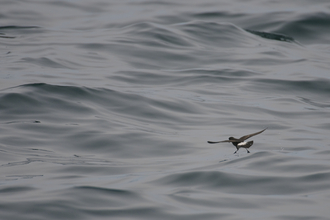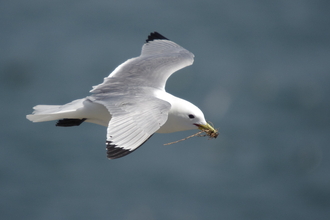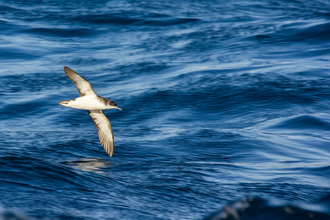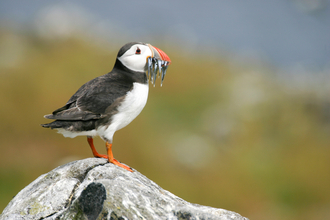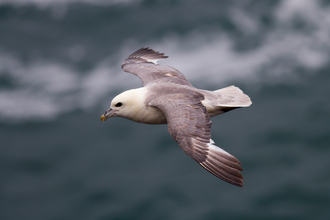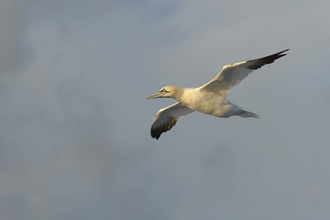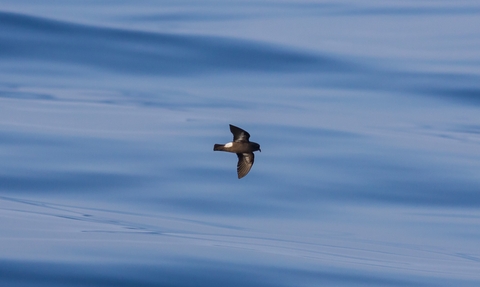
Storm petrel
Stormy seabirds
No bigger than a songbird, the European storm petrel is delightful little seabird that has been the focus of scientists and marine enthusiasts for many years. ‘Petrel’ is a corruption of pitteral, which comes from the bat-like pitter-pattering of the bird’s flight across water. ‘Storm’ comes from sailor’s association of this bird with bad weather, a superstition stemming from their chattering call and presence amidst rough, dangerous seas.
This delicate bird feeds in flocks and will often follow in the wake of ships, especially trawlers, and their scientific name translates to English as ‘water-walkers of the open sea.’
The storm petrel’s colouring can range from brownish to solid black, always seen with a white patch on their rump and a distinctly shaped square-ended tail that is short and black. The European storm petrel has a white band on the underside of each wing, separating them from other similar species of petrel. Its flight is short and quick, virtually a blur against the waves as it flutters around the larger gulls; you might notice the broad flashes of white on their backs.
Scilly is an internationally important breeding site for storm petrels, Lundy being the only other place they nest in England. Storm petrels nest around the western coasts of the UK and off the Northern Isles on rocky islands, however they struggle to survive on islands where land mammals such as rats and cats have been introduced. Storm petrels lay a single white egg and prefer to nest inside small crevices and burrows, often sharing the space with rabbits or other seabirds. Similar to the Manx shearwater, storm petrels are usually silent at sea, but during breeding season they emit a chattering call that fills the air during flights of courtship, and will also sing bizarre, crooning songs from their burrows, mixed with the occasional grunt or squeak.
Storm petrels have a great sense of smell. Not only can they locate oil-rich food from above the surface, studies show that they may also be able to recognise individuals through sense of smell alone, and will even decide upon mates this way. Storm petrels also have a unique, musky aroma that seabird ringers and scientists describe as being very pleasant.
Seabird populations in Scilly are important but also vulnerable and face a variety of threats. On land the biggest threat is predation of eggs and chicks by brown rats. The overall population of seabirds declined by 31.3% between 1983 and 2015/16. Historically the population of seabirds was in the hundreds of thousands but has now declined to just 15,994 birds (7,997 pairs). To help the islands’ seabird populations meet future challenges opportunities to improve their current conservation status and breeding range need to be addressed.
The removal of brown rats quickly leads to benefits for seabird populations, notably increased seabird numbers. Following the Seabird Recovery Project (2013-17) on St Agnes and Gugh, storm petrels returned in 2015, with 9 pairs in 2016.
Find out more
The Isles of Scilly are famed for their amazing marine life. Find out more about storm petrels nationally and other seabirds you can find on Scilly...

